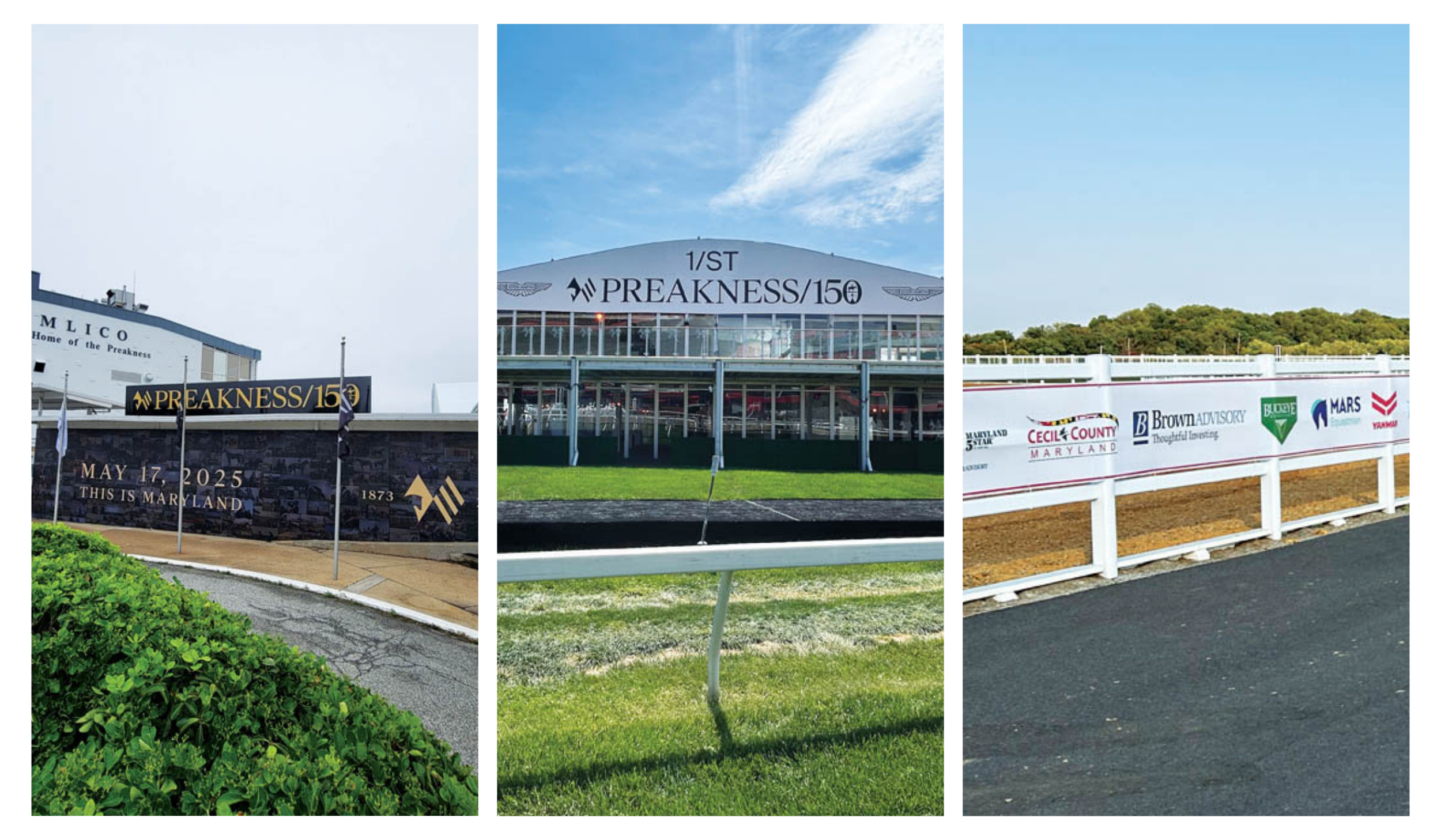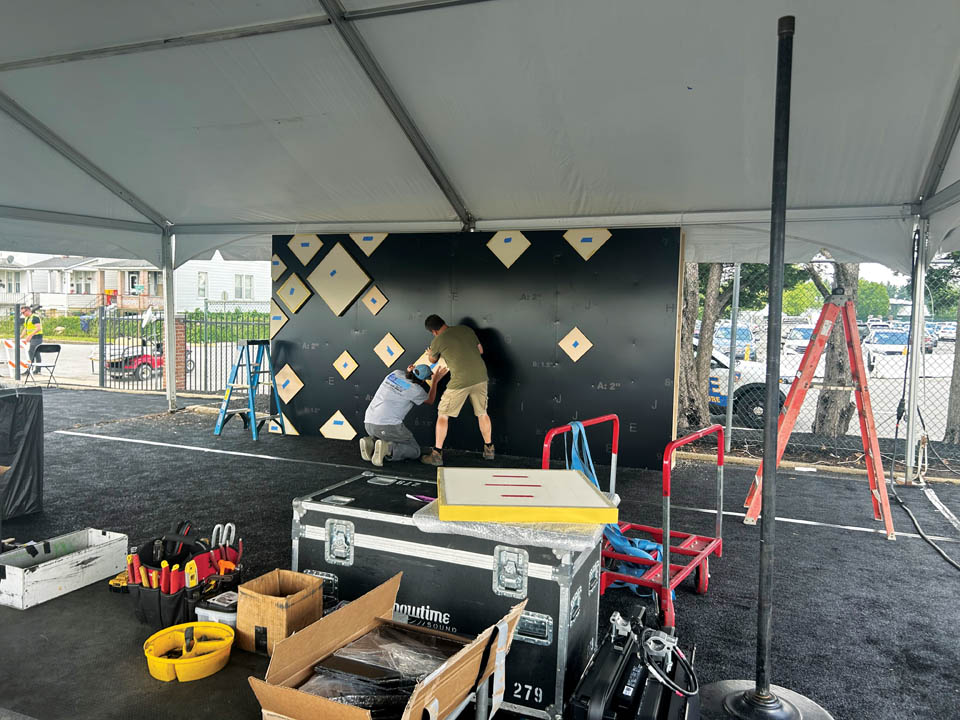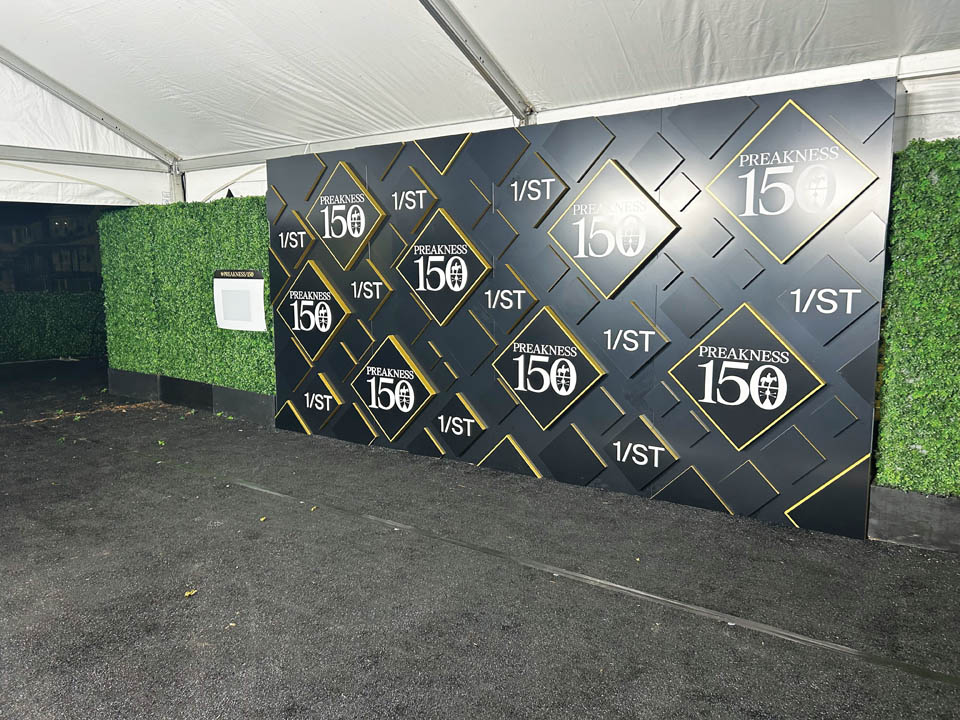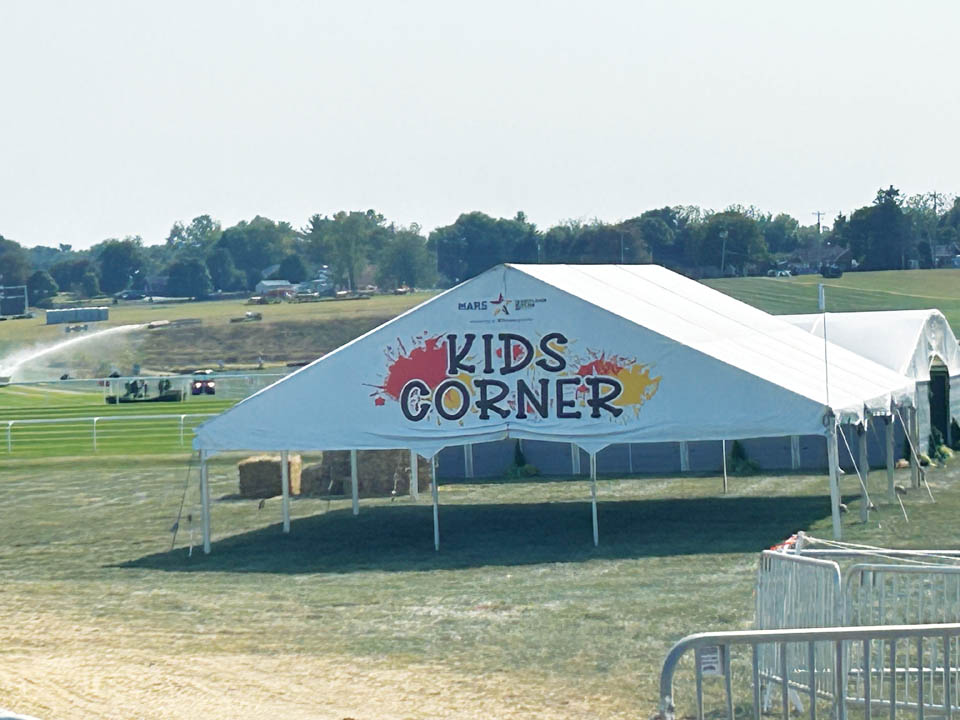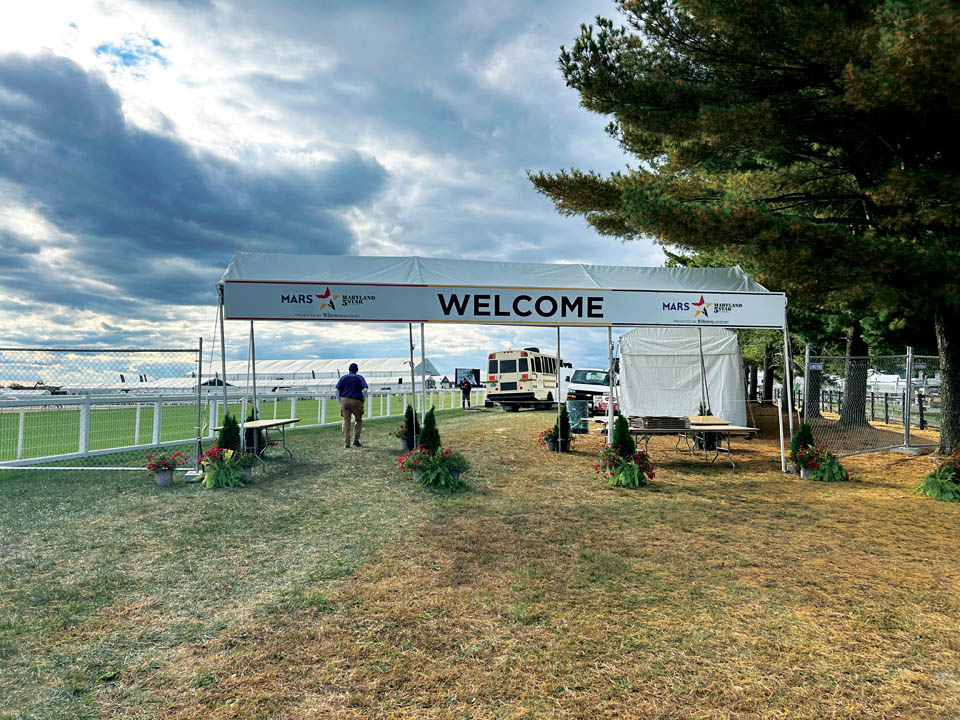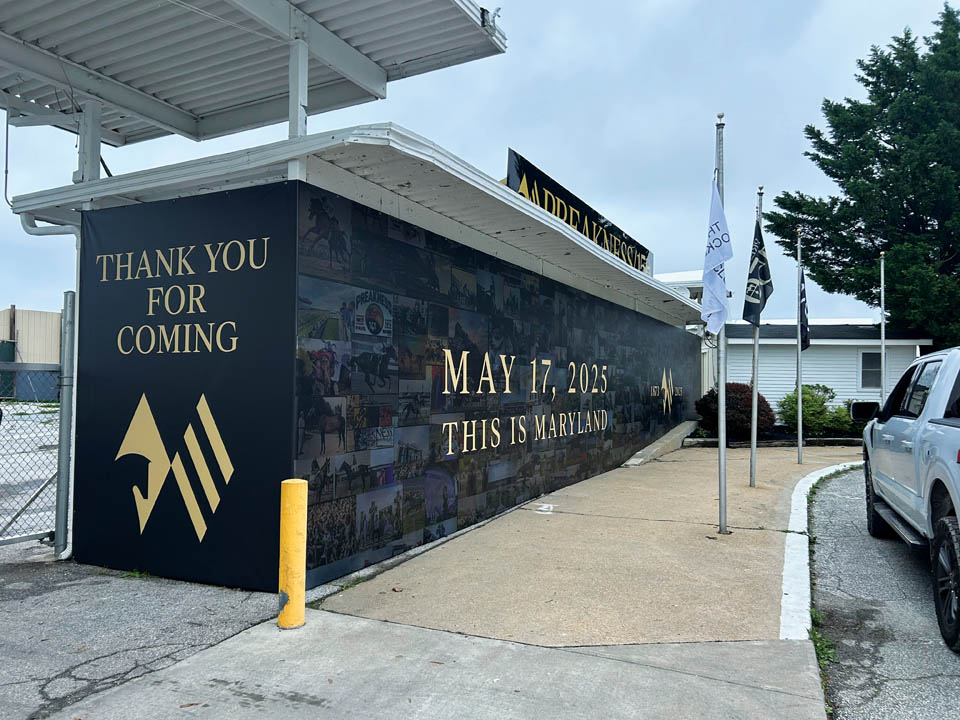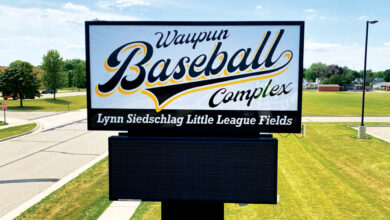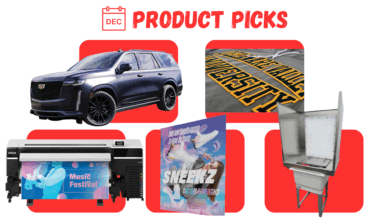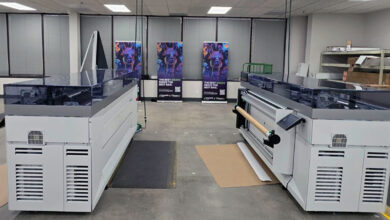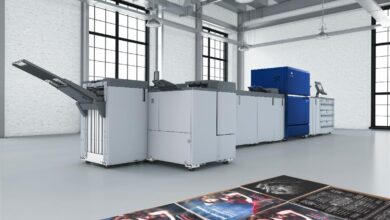If there’s ever a time to lean in and K.I.S.S. — aka keep it super simple, as the kinder version of the acronym says — it’s when you’re creating event banners and signs. Event signage is not like a print ad that the audience can take their time digesting. Often, it’s a functional wayfinder or a sign calling out an area of activation, and it’s usually posted in a crowded environment where people don’t even slow down as they pass by. The message must be as direct as possible, to be read and understood on the move, while still allowing for some design creativity that attracts attention with visual appeal. But the design creative must always be secondary to the audience message.
That’s not always easy. The client or the shop’s design team can get hung up on pretty colors, all-caps text, or some other element that has no impact on attendees and only obscures the message. So, it’s important to stress that the message is the prime concern and the design creative should serve to support and reinforce it.
Simple ideas, smart results
The KISS rule should apply to every aspect of the job, from signage concepting to production and logistics. Be prepared for last-minute changes and delays and have a process in place to meet a project’s evolving needs without sacrificing quality. No single element or sign should negatively impact the vibe or look of the event you’re working on. No one should think you’ve taken any shortcuts, and with a solid process in place, you won’t have to take any.
The production process
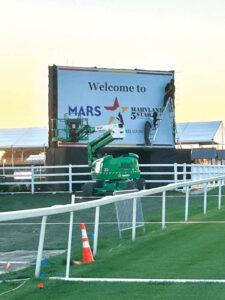 Begin with an event kickoff meeting, which should take place several months before the event week. Participants should identify the current known “Statement of Work,” which will be used to build a preliminary production and installation schedule. Follow this with an initial site walk-through to identify locations and placement.
Begin with an event kickoff meeting, which should take place several months before the event week. Participants should identify the current known “Statement of Work,” which will be used to build a preliminary production and installation schedule. Follow this with an initial site walk-through to identify locations and placement.
The most essential action in this planning phase is giving the client firm timelines and deadlines for approving all print files — and making sure they follow them. Having the client adhere to these deadlines is vital in keeping to your production and installation schedules. Plan to remind the client of approaching dates to ensure everything is on track and that you can compensate for delays.
Build in time for last-minute changes, which are always expected. Sites rapidly evolve or change during the run-up to the actual event. Changes mean new signage needs are constantly being identified, often on the day before or the day of the event.
Materials
Choosing materials for signs is a constant juggling act, but those used in events have some unique considerations.
Event signage is often temporary; even in events that repeat year to year or otherwise, sponsors and activation areas can change. Knowing this and knowing you will be replacing a lot of signage year after year, it’s best to use materials that are both cost-effective and able to withstand the elements.
There is a push for eco-friendly materials within the festival and event space. These often come with an elevated price point, so it’s understandable if the client goes with lower cost over sustainability.
More often than not, our material of choice for larger event signage is Coroplast, blow-through mesh, and lighter-weight banner material. These are the most economical options for events with a shorter run or show time. For those events or activations that demand or require a more sophisticated aesthetic or are planning to repurpose signage over the course of multiple years, we tend to look at an aluminum composite.
I’ve found that location is more of a determining factor in materials choice. For example, signage used for stage backdrops typically requires that we use a blow-through. This material allows wind to pass through, reducing stress on the structure. The same goes for larger runs of fence banner.
Logistics
Having the site ready for the installation team on event day one is a must. (Yes, this should go without saying, but unfortunately, it does need saying.) Stay on top of the schedule and be ready to shift focus instead of stopping the whole project while the delay is resolved; you’ll more likely be set to go.
A common event-signage mistake is improper placement — installing signs and banners in a way or an area that doesn’t have the desired impact. Perhaps it’s in a low-traffic area, or it’s not in the attendees’ line of sight. This is why it’s critical to have that initial site walk-through when planning the project.
No one likes to be installing signage at 3 a.m. for an event opening at 8 a.m., but if you haven’t worked out
the logistics, that’s exactly what you’ll be doing.
Embrace the energy
Events can be a slog. They require a lot of logistics, planning, and coordination behind the scenes, and you have to move fast. It can be too much for some, but others thrive on it. The rewards for an event well done more than outweigh the stress. There’s a lot of satisfaction in knowing you’ve checked off every single box and hit every benchmark for the client with nothing overlooked or missed. Considering the total attendance and sponsorships at events, a job executed effectively, in both timeliness and visual appeal, can result in numerous future referrals and partnerships with new clients, which is the ultimate goal when growing any business.
